The assimilation of the skill of whole-body listening emerges as an indispensable facet within the developmental trajectory of students across diverse age strata. Tracing its inception to the seminal year of 1990, Susanne Poulette Truesdale laid the foundation for this nuanced concept, expounding upon the multifaceted engagement of each distinct anatomical constituent in the intricate art of attentive listening.

Among the pedagogical cohort, an observable proclivity exists towards the active orchestration of immersive exercises tailored to facilitate the inculcation of whole-body listening proficiencies amidst the student body. This collective enthusiasm among educators underscores the acknowledgment of whole-body listening as an invaluable asset, deserving meticulous cultivation:
Last visual for today. Working w/ students on what active listening looks like. Our take on whole-body listening:
👂 I listen with my ears
👀 I listen with my eyes
🙂 I listen with my mouth
🧠 I listen with my mind
❤ I listen with my heartLet me know what you think! #physed pic.twitter.com/aXcXP4nZqn
— Joey Feith (@JoeyFeith) September 6, 2019
Facilitating mindfulness and contemplation during communication, whole-body listening prompts students to consider the conveyed information. Presented below is an array of activities fostering the evolution of your students as adept whole-body listeners:
So, the 22 kindness activities for elementary students I’ve chosen are:
| Kindness activity | Difficulty level | What does it teach |
| 1. Tooty Ta Dance | Low | Organization and collaboration; hanging kind messages or achievements. |
| 2. Play Simon Says | Low | Sparks creativity in structural engineering, promoting problem-solving and design skills. |
| 3. Play Red Light, Green Light | Low | Provides a hands-on and visual approach to understanding counting and numerical progression. |
| 4. Sing About It | Low | Teaches how air resistance impacts the motion of objects in the air. |
| 5. Follow the Story | Low | Promotes critical thinking, spatial reasoning, and problem-solving skills as students explore how to maximize the length of the paper chain within given constraints. |
| 6. Draw What I Say | Low | Demonstrates condensation and the water cycle. |
| 7. Play the Listening Game | Medium | Raises awareness about the environmental impact of oil spills and the importance of conservation. |
| 8. Read Whole Body Listening Larry at School | Medium | Teaches basics of coding and programming, computational thinking, robotics, and engineering concepts. |
| 9. Listen to a Podcast | Medium | Explores simple machines and mechanical principles while engaging in hands-on construction. |
| 10. Broken Telephone | Medium | Encourages experimentation with weights and measurements, fostering critical thinking. |
| 11. Blindfolded Partner Walk | High | Offers a creative and technologically engaging activity to explore animation and movie-making, fostering storytelling and technology utilization. |
| 12. Do Some Yoga | High | Teaches engineering principles, including structural stability and the dynamics of motion. |
| 13. Sound Scavenger Hunt | High | Encourages creativity, critical thinking, and understanding of physics concepts like gravity, friction, and motion. |
1. Tooty Ta Dance
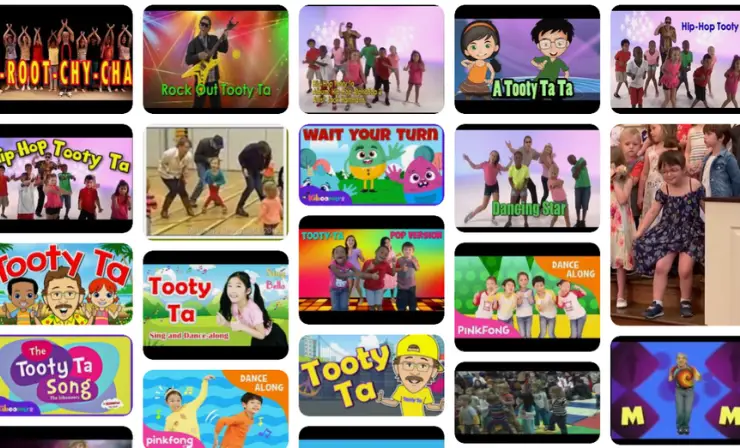
Difficulty Level: Low
What Does It Teach: Teaches coordination, rhythm, and attention to auditory cues while engaging in physical movement.
Catering to a wide spectrum of age ranges, this melodious composition extends an invitation to students, beckoning them to immerse themselves in a dynamic dance while concurrently nurturing their whole-body listening prowess. Within the realm of this musical interlude lies a unique opportunity for students to refine their ability to absorb auditory cues through physical involvement.
Participation in this harmonious undertaking mandates a keen ear and focused attention. As the musical notes intertwine with lyrical expressions, students are prompted to discern the nuances within the verses. Their task involves not just passive hearing, but active assimilation of the auditory content to facilitate synchronized bodily responses.
The fusion of movement and attentive listening serves as a holistic exercise. It aids students in comprehending the intrinsic connection between auditory input and coordinated action. This auditory-kinesthetic amalgamation offers a playful yet purposeful platform for students to expand their capacity to engage with multifaceted stimuli.
Through this interactive auditory experience, students cultivate an enhanced sensitivity to auditory elements, while also cultivating a more comprehensive grasp of the symphony that is communication. As they sway to the rhythm, guided by the lyrics, students embark on a journey that transcends mere physicality, delving into the depths of attentive and mindful engagement.
2. Play Simon Says
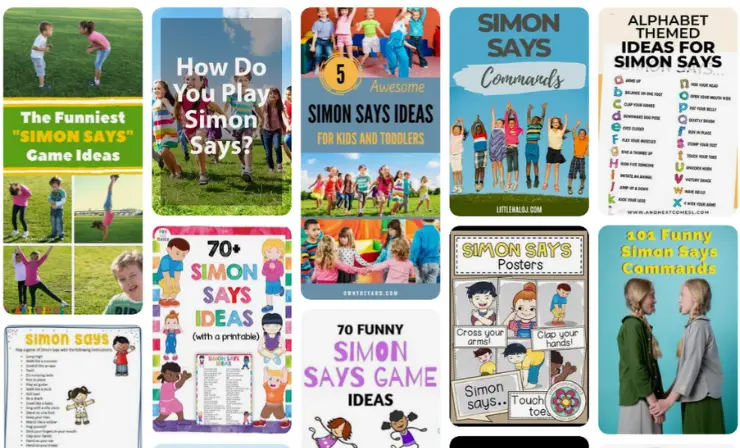
Difficulty Level: Low
What Does It Teach: Enhances attentive listening by requiring participants to follow instructions only when prefaced with “Simon says.”
A catalyst for heightened enthusiasm toward education lies in the realm of engaging listening activities. A quintessential illustration of this is the timeless game of Simon Says. Embedded within this game’s mechanics is an invaluable occasion for students to cultivate their adeptness in whole-body listening.
The orchestration of this activity involves designating an individual as Simon, thereby establishing the central figure for the game. In this orchestrated interaction, students are entrusted with the role of active listeners, assimilating auditory instructions with precision to synchronize their actions.
Simon Says transcends mere entertainment; it offers a nuanced avenue for students to exercise their capacity to assimilate auditory cues across diverse body components. This harmonious amalgamation of sensory perception and kinesthetic response underscores the intricate linkage between auditory input and physical manifestation.
The intrinsic value of Simon Says goes beyond the surface level of amusement. It imparts an experiential understanding of how meticulous listening, rooted in its entirety, is pivotal for accurate interpretation and execution. Consequently, students are equipped not just with the competence to decode verbal prompts, but also with a heightened awareness of the synchrony between auditory reception and corporeal expression.
Additionally, you can watch this video about Simon Says:
3. Play Red Light, Green Light
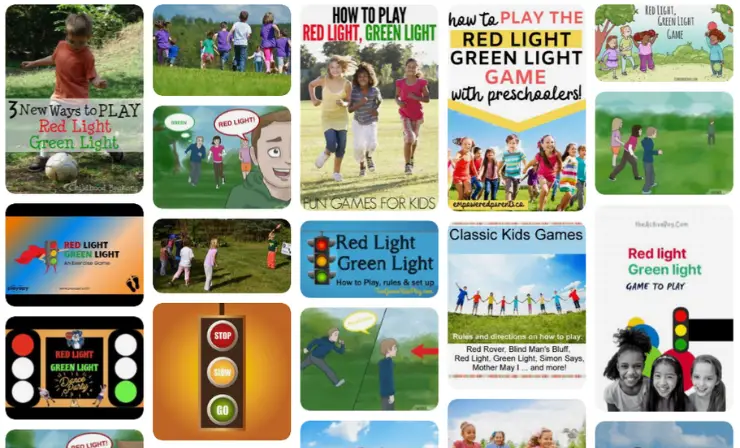
Difficulty Level: Low
What Does It Teach: Requires attentive listening to auditory commands for stopping and moving, fostering quick responsiveness.
A venerable addition to the array of games nurturing attentive listening capabilities is the dynamic rendition of Red Light, Green Light. In this interactive pursuit, students are challenged to channel their focus towards the speaker, a prerequisite for adeptly capturing and comprehending directions. This orchestrated engagement emerges as a propitious avenue for students to refine their holistic listening skills, and concurrently, presents a gratifying interlude of movement. The confluence of attentiveness and physical motion encapsulated within this game aptly underscores the multi-dimensional nature of the learning experience. As students participate, their auditory acuity becomes intertwined with corporeal response, forging an intricate connection between listening cognition and kinetic interaction. This symphony of activities operates in alignment with the overarching pedagogical endeavor, encapsulating both cognitive engagement and the rejuvenating exuberance of movement.
Here’s a video suitable for your use in playing red light, green light:
4. Sing About It
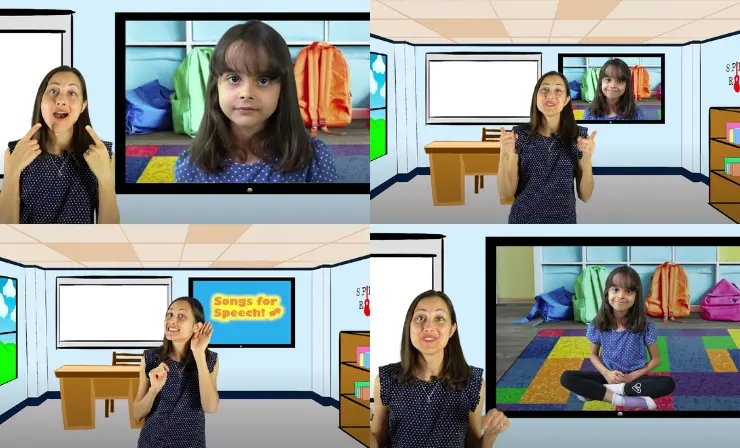
Difficulty Level: Low
What Does It Teach: Reinforces active listening through singing and responding to lyrics, promoting auditory focus.
The indelible impact of music upon students’ memory is an established phenomenon. A melodic exploration centered on the realm of whole-body listening extends a resonant call, beckoning students to converge in harmonious unison. Within the framework of this musical composition lies a transformative journey, guiding students through the intricacies of whole-body listening.
The auditory resonance of this song becomes a conduit for the assimilation of multifaceted facets that construct a proficient whole-body listener. With each verse, students traverse the terrain of attentiveness, stepping into the shoes of a listener who comprehends not just through ears, but through the orchestration of every sensory receptor.
As the melody weaves its spell, it echoes beyond the realm of auditory experience. It becomes a mnemonic thread, weaving through the cognitive tapestry of students, anchoring the principles of whole-body listening in their consciousness. The marriage of musical rhythm and the cognitive process enhances students’ capacity to internalize and embody the concept.
This lyrical odyssey is not just a song; it evolves into a mnemonic symphony, orchestrating an intricate interplay of sound and cognition. Each note resonates with the potential to transform students into perceptive whole-body listeners, endowed with the faculties to navigate the intricate subtleties of engaged, all-encompassing listening.
5. Follow the Story
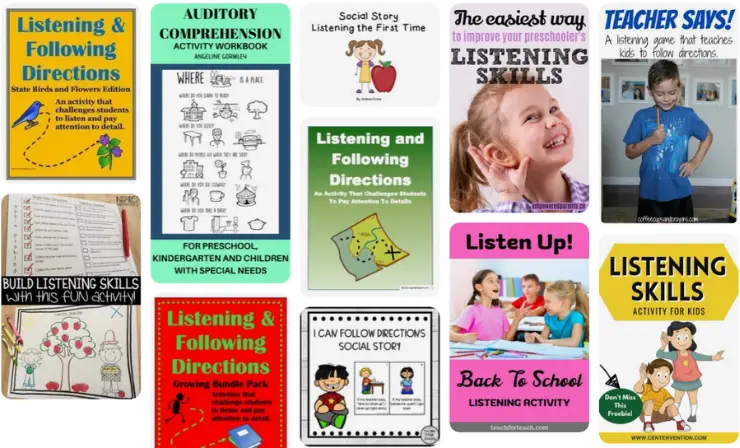
Difficulty Level: Low
What Does It Teach: Cultivates attentive listening and critical thinking as participants collaboratively create a narrative.
Engaging in a Follow the Story activity cultivates whole-body listening skills among students in an interactive narrative setting. Commencing with an initial narrative spark, this collaborative venture propels students into a realm of attentive engagement where each sentence serves as a baton handed from one participant to another.
As the story unfolds, participants not only listen keenly but also embrace the responsibility of seamlessly continuing the narrative’s trajectory. This dynamic exchange encompasses attentive listening, creative processing, and cohesive expression. Students, akin to conductors of an auditory symphony, must absorb the previous sentence, fathom its essence, and then contribute their own coherent fragment to the evolving storyline.
Beyond a mere exercise in attentive listening, this activity nurtures a fusion of cognitive faculties. Students become receptive listeners, adapting their own contributions to sustain narrative flow. This interactive exchange forms a microcosm of comprehensive engagement, where auditory acumen and imaginative exploration are seamlessly intertwined.
In essence, Follow the Story echoes the essence of whole-body listening, where the mind, creativity, and auditory perception merge. This pedagogical endeavor both enriches students’ listening skills and celebrates the symbiotic dance of collective storytelling, leaving a lasting impact on their holistic growth.
Here is a video discussing various storytelling games designed for children’s utilization in the classroom:
6. Draw What I Say
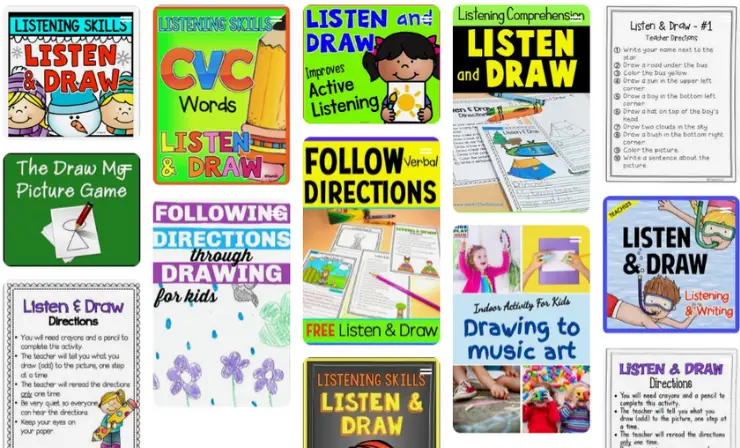
Difficulty Level: Low
What Does It Teach: Reinforces active listening by following verbal instructions to create a visual representation.
Engaging students in a creative voyage, this whole-body listening activity combines attentive hearing with artistic expression. By imparting meticulous instructions for a collective drawing, participants are immersed in a multi-sensory experience that transcends mere auditory reception.
Guided by the auditory directives, students actively perceive the minutiae of each detail, evoking a mental canvas that unfurls in tandem with the instructions. This exercise symbolizes the intersection of auditory comprehension, cognitive processing, and tactile execution.
The ensuing artwork assumes the role of a testament to the intricate interplay between attentive listening and imaginative interpretation. Students not only absorb the auditory cues but also internalize and transmute them into visual representation, amalgamating auditory and visual senses.
As the drawing evolves, participants embody the essence of whole-body listening, their minds and hands harmonizing to synthesize an artistic reflection of auditory input. This creative fusion instills a holistic understanding of how attentive listening extends beyond auditory acuity, infiltrating other facets of human expression.
In the embrace of this activity, students traverse the terrain of sensory integration, aligning auditory, cognitive, and artistic faculties. The result is more than just a drawing; it stands as a palpable manifestation of the intrinsic synergy between attentive listening and creative interpretation, enriching students’ perceptual and expressive horizons.
Here is a video pertaining to this particular activity:
7. Play the Listening Game
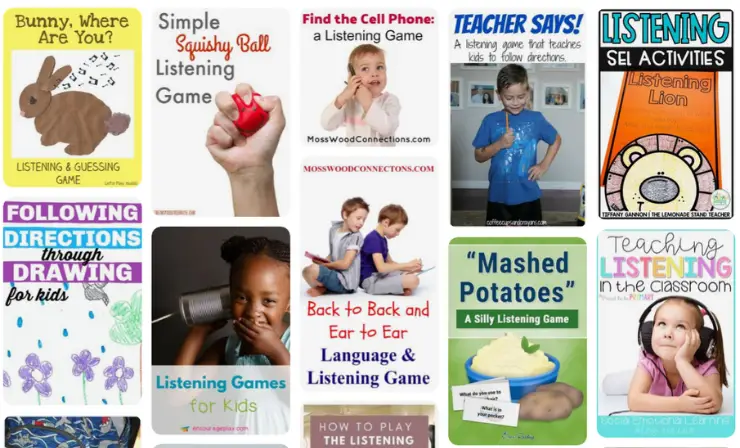
Difficulty Level: Medium
What Does It Teach: Develops active listening skills as participants respond to specific cues or prompts provided by the leader.
The orchestration of the listening game calls upon students to embark on a journey of attentive cognition. By meticulously internalizing the imparted instructions, students unravel the intricate tapestry of this activity. Furthermore, their auditory senses stand poised to capture the delicate echoes of bell tolls interwoven within the game’s fabric.
Within this ludic enterprise lies a dual engagement. The confluence of directed listening and unfettered imagination forms the cornerstone of this endeavor. Students, as participants, navigate through the interplay of auditory comprehension and imaginative exploration.
The auditory landscape of the game transcends mere sonic stimuli. It serves as a conduit for students to harness their cognitive faculties and navigate the gamut of auditory cues. The resonant harmonies of bell sounds seamlessly merge with the contours of the game, enhancing the sensory mosaic and eliciting heightened engagement.
This orchestrated amalgamation resonates with a pedagogical melody. Students are not mere passive listeners; they metamorphose into discerning receptors of auditory prompts, all while embarking on a quest fueled by imaginative whims. Thus, the listening game traverses beyond the auditory realm, unfurling as an intricate interplay of cognitive vigor and imaginative prowess.
Presented here is a video featuring a listening game:
8. Read Whole Body Listening Larry at School
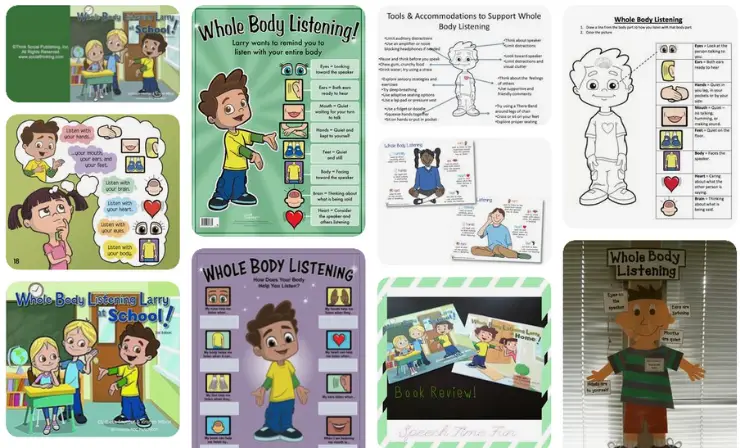
Difficulty Level: Medium
What Does It Teach: Educates students about the concept of whole-body listening, enhancing their understanding of attentive engagement.
Authored by Elizabeth Sautter, the Whole Body Listening Larry books stand as a valuable conduit to initiate students into the realm of comprehensive listening. A collective read-aloud session with your cohort orchestrates an opportunity to delve into the nuances of attentive engagement. Within the narrative’s embrace, students navigate the labyrinth of their individual listening styles. This literary companion assumes a versatile role, amiable to recurrent perusal, providing a recurring platform to invigorate encounters with the concept.
As the textual landscape unfurls, students traverse beyond mere words, unearthing the layers of their auditory reception. This literary voyage melds seamlessly with the educational continuum, seamlessly intertwining the realms of cognitive exploration and literary discovery.
The Whole Body Listening Larry series, under the deft penmanship of Elizabeth Sautter, thus becomes more than a collection of stories; it evolves into an instrument fostering conscientious listening. A symphony of introspection resonates as students embark on a journey guided by Larry’s example, transmuting each reading into an opportunity to enrich their listening tapestry.
Provided is a video showcasing a read-aloud session of this book:
9. Listen to a Podcast
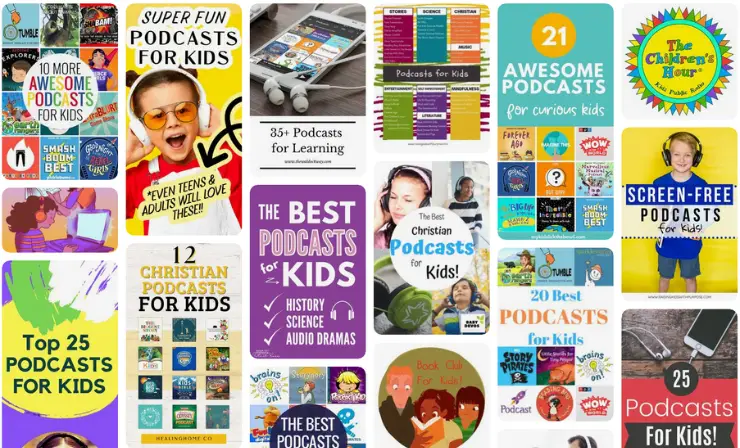
Difficulty Level: Medium
What Does It Teach: Enhances listening comprehension through focused engagement with spoken content on diverse topics.
Podcasts emerge as a captivating medium for cultivating whole-body listening skills among students. When students embark on a podcast-listening journey with a learning objective, they inherently embrace an attentive engagement that extends beyond auditory reception. The experience becomes a fusion of sensory absorption and cognitive reflection.
By encouraging students to intermittently pause and transcribe their reflections, educators weave a bridge between auditory stimuli and active mental processing. This practice encapsulates the principles of whole-body listening, as students intertwine their auditory senses with cognitive synthesis.
As they meticulously transcribe their thoughts, students bridge the gap between listening and comprehension. They are attuned to the podcast’s auditory nuances while engaging their minds to discern the essence of the discourse. This dual engagement hones their ability to not just hear, but to actively perceive and interpret the auditory content.
The podcast-listening exercise, manifesting as a confluence of sensory and cognitive domains, resonates as a dynamic whole-body listening activity. Students traverse through a rich tapestry of auditory discourse, fortified by their responsive cognitive engagement. This immersive practice prepares them to be astute listeners in a world pulsating with diverse auditory stimuli, a testament to the holistic growth cultivated through such endeavors.
Presented is a video featuring a storytelling podcast tailored for children:
10. Broken Telephone
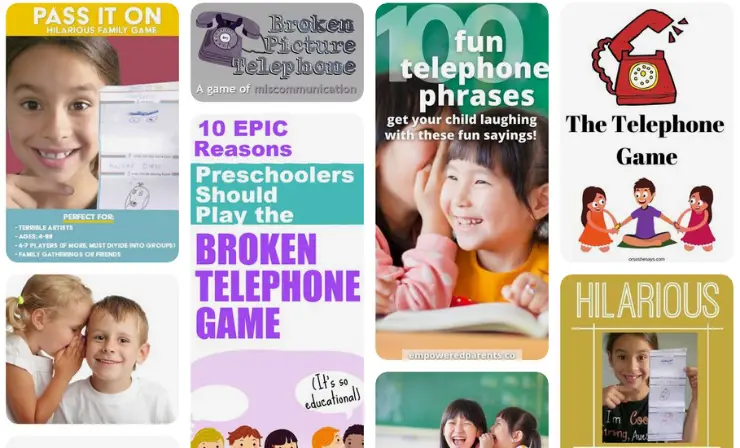
Difficulty Level: Medium
What Does It Teach: Emphasizes attentive listening and communication skills as a message is passed along, often evolving in the process.
The time-tested Broken Telephone game encapsulates a delightful avenue for students to refine their whole-body listening prowess through an engaging narrative relay. Seated in a circular arrangement, participants initiate an auditory journey by whispering a message to the neighbor on either side. This endeavor mirrors the intricate threads of attentive listening where participants immerse themselves in auditory nuances.
As the message meanders through the circle, it morphs and evolves. The game acts as a living testament to the intricate nature of auditory reception. The final message often stands as a testament to the journey it undertook, typically bearing little resemblance to its inception.
Beyond a demonstration of listening fallibility, the game’s essence underscores the multifaceted dimensions of attentive engagement. Participants navigate the exercise with cognitive acumen, adapting to variations in auditory transmission. The game becomes a harmonious confluence of auditory perception, cognitive processing, and imaginative interpretation.
Through this interactive relay, students foster a holistic understanding of whole-body listening. The very act of listening extends beyond mere auditory input, encompassing cognitive adaptability and imaginative recalibration. Broken Telephone stands as a parable, illustrating the intricate dance between listening and comprehension in a playful and enlightening manner.
Provided is a video depicting students engaged in the broken telephone game:
11. Blindfolded Partner Walk
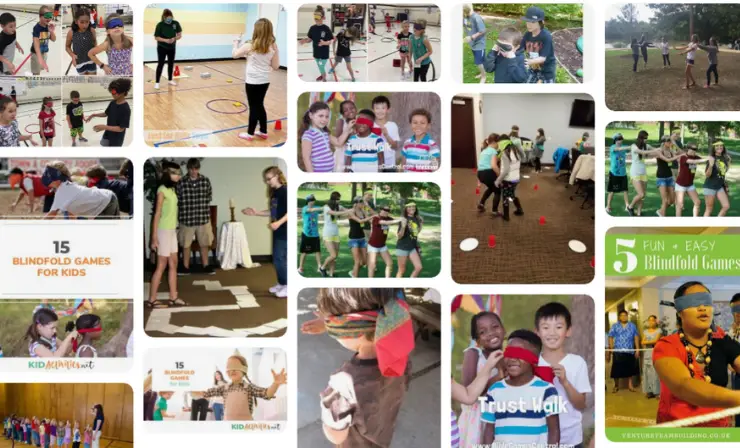
Difficulty Level: High
What Does It Teach: Cultivates trust and communication as students navigate a course with guidance from a partner’s verbal cues.
The blindfolded partner walk stands as a captivating embodiment of whole-body listening principles for students. In this immersive activity, students engage in a unique kinesthetic voyage, a symbiosis of trust, communication, and heightened sensory perception.
Paired participants, one blindfolded and the other serving as a guide, navigate a predetermined path. Through physical connection and nonverbal cues, the guide leads their partner, immersing them in an experience that transcends conventional auditory and visual engagement.
For the blindfolded student, reliance shifts from traditional senses to the subtleties of touch, motion, and sound. Every step and variation in terrain is registered as an intricate mosaic, fostering a holistic sensory engagement. The guiding student embraces the role of an orchestrator, imparting direction through careful tactile communication and responsive cues.
As students navigate this experiential journey, they cultivate a profound understanding of whole-body listening. The activity underscores the interconnectedness of the body’s senses, amplifying the resonance of attentive engagement. It stands as a metaphorical microcosm of real-world interactions, illustrating the significance of perceptive listening, trust, and effective nonverbal communication.
The blindfolded partner walk, beyond its physicality, nurtures empathy and cooperation. It fosters an experiential grasp of the intricate symphony underlying communication. In its culmination, students emerge not just as proficient listeners, but as individuals attuned to the myriad nuances of interaction—a testament to the holistic growth fostered by immersive activities like this.
Displayed is a video depicting students engaged in a blindfolded partner walk:
12. Do Some Yoga
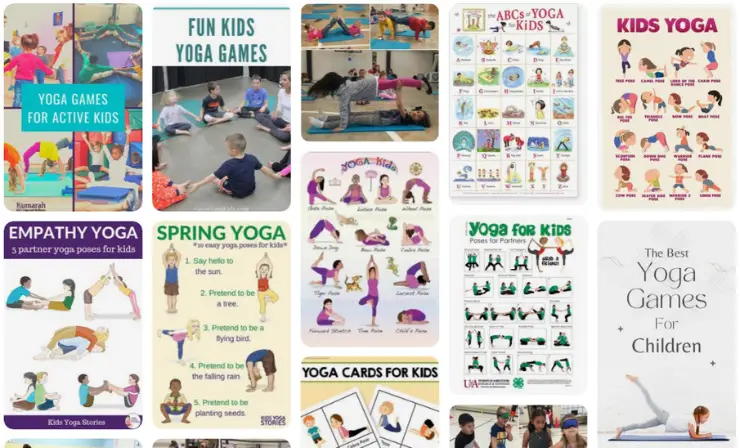
Difficulty Level: High
What Does It Teach: Combines attentive listening with physical movement, encouraging mindfulness and body awareness.
Yoga emerges as a captivating avenue to foster holistic engagement of both body and mind. Within this domain, students encounter an opportunity to enact whole-body listening principles as they navigate through a curated collection of poses. Orchestrating a basic yoga session serves as a conduit for students to embrace attentive listening while adhering to the instructions for each pose.
In this narrative, the teacher assumes the role of guide, ushering participants through a sequence of poses that demand careful auditory receptivity. For instance, directives such as “Elevate your arms overhead” or “Incline forward and reach for your toes” epitomize the auditory cues guiding each bodily movement. This integration of auditory command and corporeal response aligns seamlessly, nurturing the foundational elements of whole-body listening.
Yoga’s incorporation of sensory awareness within a framework of physicality offers an ideal milieu for students to bridge the gap between auditory absorption and bodily action. As the participants maneuver through each pose, they inhabit a realm where mindful listening paves the way for synchronized corporeal articulation. This interactive juxtaposition not only enriches their yoga experience but also facilitates an enhanced grasp of attentive engagement in diverse contexts.
Here’s a video containing yoga exercises for your students:
13. Sound Scavenger Hunt
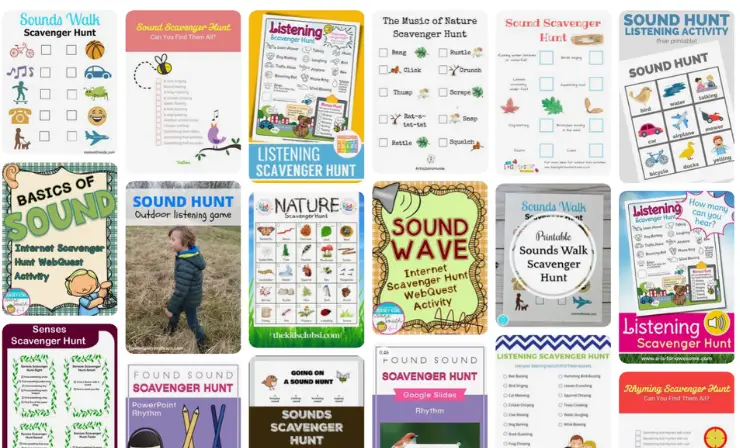
Difficulty Level: High
What Does It Teach: Develops auditory perception as participants identify and differentiate various sounds within their environment.
The concept of a sound scavenger hunt encapsulates a captivating whole-body listening venture for students. In this immersive exploration, students embark on an auditory odyssey, attuning themselves to the symphony of sounds that envelop their environment.
Guided by a curated list of auditory cues, participants embrace the role of discerning listeners, unfurling their senses to capture the diverse spectrum of sounds that interweave within their surroundings. This endeavor transcends the auditory realm, extending an invitation for students to engage their entire being in this sensorial pursuit.
Each sound encountered during the hunt becomes a node of attentiveness. Students not only identify but also discern the origin and nature of each auditory element. This practice fosters a profound comprehension of the auditory landscape, forging a connection between attentive listening and cognitive interpretation.
As students traverse through this soundscape, they embody the essence of whole-body listening. Every sense contributes to their engagement, as they employ their ears to apprehend, their minds to process, and their bodies to move in the direction of each sound.
The sound scavenger hunt stands as a pedagogical tapestry that intertwines sensory awareness, cognitive acumen, and physical responsiveness. Beyond its interactive appeal, it inculcates a nuanced listening ethos, instilling in students a heightened appreciation for the orchestration of sounds that define their environment.
Additionally, there’s a video at your disposal that can be employed for a sound scavenger hunt:
Useful Resources
- Tips To Teach Whole Body Listening
- A Guide to Active or Whole Body Listening
- Why Teach Whole Body Listening?
Conclusion
Incorporating whole body listening activities into students’ routines enhances attention, focus, and active listening skills. These dynamic exercises not only engage their minds but also promote sensory awareness and comprehension. By fostering attentive listening habits, students are better equipped to excel in both academic and social interactions.
- Overview of 22 Low-Code Agencies for MVP, Web, or Mobile App Development - October 23, 2024
- Tips to Inspire Your Young Child to Pursue a Career in Nursing - July 24, 2024
- How Parents Can Advocate for Their Children’s Journey into Forensic Nursing - July 24, 2024
